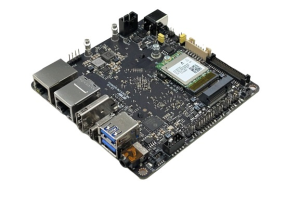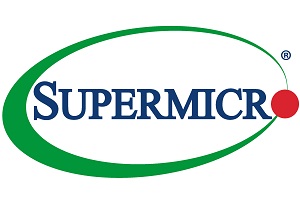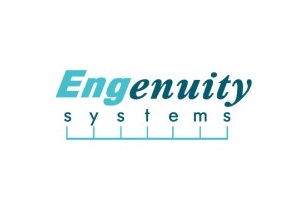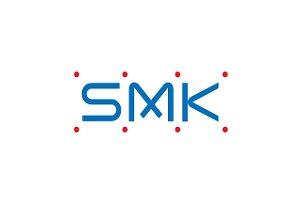
ASUS IoT, a global AIoT (artificial intelligence of things) solution provider, has announced Tinker Board 3N series, an Arm-based single-board computer (SBC). This empowers system integration, adaptability and expandability elevating for emerging industrial internet of things (IIoT) era.
The NUC (next unit of computing)-sized SBC series is equipped with rich I/O and supports Linux Debian, Yocto, and Android operating systems, presenting an all-new option for developers and system integrators’ diverse IIoT projects. Its optimised thermal design simplifies deployment of embedded applications, ensuring efficient operation in demanding environments.
With its durable design, Tinker Board 3N offers enhanced computing performance, low power consumption and an interfaces, so it’s primed and ready for smart manufacturing applications powering the IoT development.
Versatile performance and advanced graphics processing
To deliver the raw power and versatility demanded by IIoT applications, Tinker Board 3N is equipped with a 64-bit, quad-core Arm Rockchip RK3568 processor. Built on the Arm v8 architecture, this generates remarkable GPU performance for seamless graphics processing with low power consumption. Exacting in-house tests shows that Tinker Board 3N delivers up to 17%-higher GPU performance and up to 31% increase in total UX score, encompassing data security, processing capabilities and image and video processing, Tinker Board 3N excels in IoT (internet of things) gateway, human-machine interfacing (HMI), and factory automation.
Resilient thermal design
In addition to its outstanding computing performance, Tinker Board 3N incorporates several mechanical design enhancements to facilitate embedded application use with flexibility. For example, it features a low-profile pushpin heatsink and SoC (system on chip) placement on the back side for added ease of installation, with its diminutive NUC-scale dimensions allowing for SWaP-constrained space deployment and flexible system integration. It is also engineered to operate smoothly in harsh industrial environments, with an impressive operating-temperature range of -40 to 85°C in order to fulfill industrial automation needs.
Enhanced connectivity for diverse applications
Tinker Board 3N-series devices are equipped with PoE (power over ethernet), LVDS (low-voltage differential signaling), COM, and CAN (controller area network) bus interfaces, along with M.2 E and M.2 B slots to accommodate WiFi 5/6 and 4G/5G expansion modules for cloud computing. The onboard LVDS supports FHD (full high definition) output via dual channels, making it suitable for multiple display solutions, while embedded COM headers and CAN bus can be utilised in diverse applications, such as controllers and robotic arms, expanding the board’s usability. Delivering enhanced computing performance, remarkable expandability and cost-effectiveness, Tinker Board 3N series is suited for industrial automation and smart factory environments. It fulfills the need for real-time communication, frictionless integration, long-term operation, and stringent revision control, making it an ideal choice for fulfilling the demands of versatile applications in these settings.
Support for operating systems
Tinker Board 3N supports a variety of the mainstream operating system platforms, catering to different development environment needs. Users can choose from Linux Debian, Yocto, and Android operating systems. The ASUS IoT SBC supports firmware over the air (FOTA) for both Android and Linux, ensuring regular software updates and system maintenance for optimal performance.
Tinker Board 3N is available in three distinct flavours to meet diverse project requirements. These include Tinker Board 3N PLUS, Tinker Board 3N and Tinker Board 3N LITE.
Availability and Pricing
For more information about Tinker Board 3N and its availability, please visit the Tinker Board 3N webpage.
Comment on this article below or via Twitter: @IoTNow_OR @jcIoTnow
- SEO Powered Content & PR Distribution. Get Amplified Today.
- PlatoData.Network Vertical Generative Ai. Empower Yourself. Access Here.
- PlatoAiStream. Web3 Intelligence. Knowledge Amplified. Access Here.
- PlatoESG. Automotive / EVs, Carbon, CleanTech, Energy, Environment, Solar, Waste Management. Access Here.
- PlatoHealth. Biotech and Clinical Trials Intelligence. Access Here.
- ChartPrime. Elevate your Trading Game with ChartPrime. Access Here.
- BlockOffsets. Modernizing Environmental Offset Ownership. Access Here.
- Source: https://www.iot-now.com/2023/08/10/134245-asus-iot-announces-tinker-board-3n-series/
- :has
- :is
- $UP
- a
- About
- accommodate
- adaptability
- added
- addition
- advanced
- AIR
- Allowing
- along
- also
- an
- and
- android
- announced
- Announces
- Application
- applications
- architecture
- ARE
- AREA
- ARM
- arms
- article
- artificial
- artificial intelligence
- AS
- Asus
- Automation
- availability
- available
- b
- back
- BE
- below
- board
- both
- built
- bus
- by
- CAN
- capabilities
- channels
- chip
- choice
- Choose
- Cloud
- cloud computing
- COM
- Communication
- computer
- computing
- Connectivity
- consumption
- control
- controller
- data
- data security
- definition
- deliver
- delivering
- delivers
- demanded
- demanding
- demands
- deployment
- Design
- developers
- Development
- Devices
- different
- dimensions
- Display
- distinct
- diverse
- e
- ease
- efficient
- elevating
- embedded
- emerging
- empowers
- encompassing
- enhanced
- enhancements
- ensuring
- Environment
- environments
- equipped
- Era
- exacting
- example
- expanding
- expansion
- facilitate
- factory
- Features
- Flexibility
- flexible
- For
- frictionless
- from
- Fulfill
- fulfilling
- full
- gateway
- generates
- Global
- GPU
- graphics
- headers
- High
- HMI
- HTML
- HTTPS
- ideal
- image
- impressive
- in
- include
- incorporates
- Increase
- industrial
- industrial automation
- information
- installation
- integration
- Intelligence
- interfaces
- Internet
- internet of things
- iot
- Iot (internet of things)
- IT
- ITS
- linux
- long-term
- Low
- Mainstream
- maintenance
- Making
- manufacturing
- mechanical
- Meet
- Modules
- more
- multiple
- Need
- needs
- network
- news
- next
- now
- of
- Offers
- on
- Onboard
- operate
- operating
- operating system
- operating systems
- operation
- optimal
- Optimised
- Option
- or
- order
- output
- outstanding
- over
- performance
- Platforms
- plato
- Plato Data Intelligence
- PlatoData
- please
- plus
- power
- Powering
- processing
- Processor
- project
- projects
- provider
- range
- Raw
- ready
- real-time
- regular
- remarkable
- Reports
- Requirements
- Rich
- Robotic
- SBC
- score
- seamless
- security
- Series
- settings
- several
- Shows
- side
- slots
- smart
- smoothly
- So
- Software
- solution
- Solutions
- Space
- such
- suitable
- Supports
- system
- Systems
- tests
- that
- The
- thermal
- These
- things
- this
- three
- to
- Total
- unit
- Updates
- usability
- use
- users
- ux
- variety
- versatile
- versatility
- via
- Video
- Visit
- while
- wifi
- with
- zephyrnet












